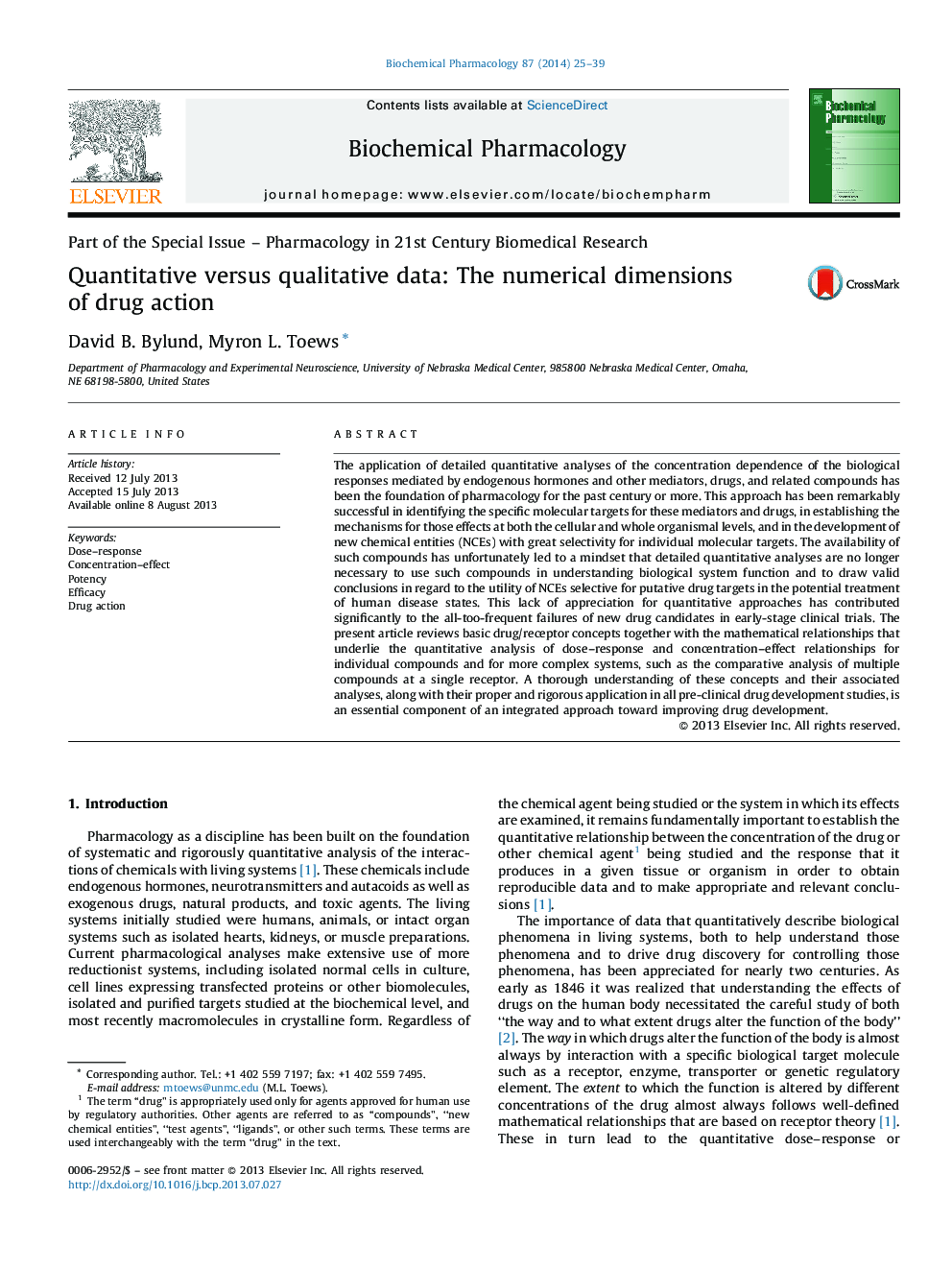| Article ID | Journal | Published Year | Pages | File Type |
|---|---|---|---|---|
| 2512411 | Biochemical Pharmacology | 2014 | 15 Pages |
The application of detailed quantitative analyses of the concentration dependence of the biological responses mediated by endogenous hormones and other mediators, drugs, and related compounds has been the foundation of pharmacology for the past century or more. This approach has been remarkably successful in identifying the specific molecular targets for these mediators and drugs, in establishing the mechanisms for those effects at both the cellular and whole organismal levels, and in the development of new chemical entities (NCEs) with great selectivity for individual molecular targets. The availability of such compounds has unfortunately led to a mindset that detailed quantitative analyses are no longer necessary to use such compounds in understanding biological system function and to draw valid conclusions in regard to the utility of NCEs selective for putative drug targets in the potential treatment of human disease states. This lack of appreciation for quantitative approaches has contributed significantly to the all-too-frequent failures of new drug candidates in early-stage clinical trials. The present article reviews basic drug/receptor concepts together with the mathematical relationships that underlie the quantitative analysis of dose–response and concentration–effect relationships for individual compounds and for more complex systems, such as the comparative analysis of multiple compounds at a single receptor. A thorough understanding of these concepts and their associated analyses, along with their proper and rigorous application in all pre-clinical drug development studies, is an essential component of an integrated approach toward improving drug development.
Graphical abstractFigure optionsDownload full-size imageDownload as PowerPoint slide
